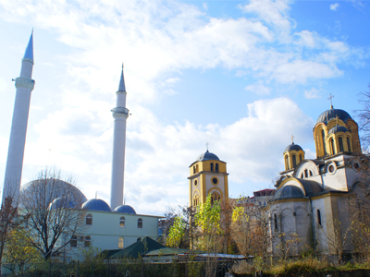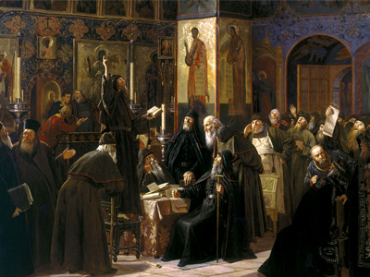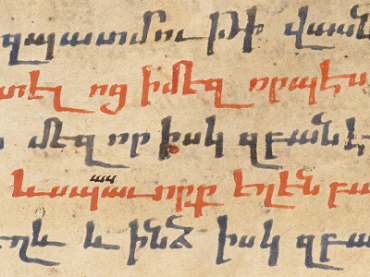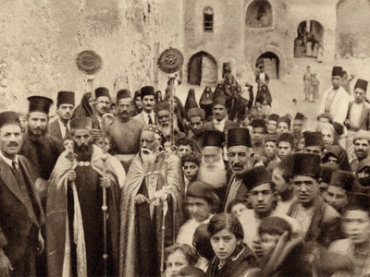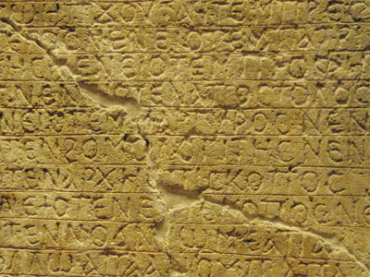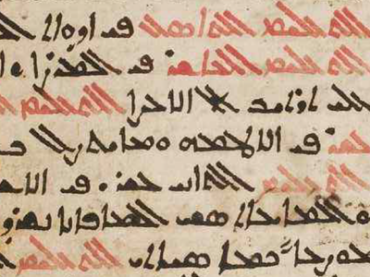Syriac and Eastern Christianity
Foundations for Syriac Lexicography II
Colloquia of the International Syriac Language Project
Edited by P. J. Williams; Managing Editor Beryl Turner
Series: Perspectives on Syriac Linguistics 3
ISBN: 978-1-60724-088-4
This volume is part of a series that addresses issues of Classical Syriac lexicography, and the lexicography of other ancient languages. The international team of authors invited to participate represents a wide range of disciplines and opens new horizons in lexical thinking. Essays in this volume discuss taxonomy, the Syriac passive participle, translating Greek verbs with alpha privatives into Syriac, the translation of Syriac particles, and the history of Syriac lexica. This book represents the forefront of Syriac lexical studies, and has much to offer those studying Greek and other Semitic languages as well.
$138.00
The Syrian Rite of Antioch
Series: Analecta Gorgiana 130
ISBN: 978-1-60724-094-5
In his classic introduction to Eastern Orthodox liturgies, King examines the liturgies of the Oriental Orthodox churches. In this volume the Syrian rite is considered. The rite is described and given a context in the setting of its native church.
$66.00
Introduction to The Rites of Eastern Christendom
Series: Analecta Gorgiana 131
ISBN: 978-1-60724-070-9
In his classic introduction to Eastern Orthodox liturgies, King examines the liturgies of the Oriental Orthodox churches. In this volume the introductory material to his work is presented. The various Oriental Churches are described in this introduction.
$45.00
The Maronite Rite
Series: Analecta Gorgiana 132
ISBN: 978-1-60724-095-2
In his classic introduction to Eastern Orthodox liturgies, King examines the liturgies of the Oriental Orthodox churches. In this volume the Maronite rite is considered. The rite is described and given a context in the setting of its native church.
$56.00
The Coptic Rite
Series: Analecta Gorgiana 132
ISBN: 978-1-60724-096-9
In his classic introduction to Eastern Orthodox liturgies, King examines the liturgies of the Oriental Orthodox churches. In this volume the Coptic rite is considered. The rite is described and given a context in the setting of its native church.
$69.00
The Ethiopic Rite
Series: Analecta Gorgiana 134
ISBN: 978-1-60724-097-6
In his classic introduction to Eastern Orthodox liturgies, King examines the liturgies of the Oriental Orthodox churches. In this volume the Ethiopic rite is considered. The rite is described and given a context in the setting of its native church.
$69.00
The Armenian Rite
Series: Analecta Gorgiana 135
ISBN: 978-1-60724-098-3
In his classic introduction to Armenian Orthodox liturgies, King examines the liturgies of the Oriental Orthodox churches. In this volume the Ethiopic rite is considered. The rite is described and given a context in the setting of its native church.
$61.00
The Byzantine Rite
Series: Analecta Gorgiana 136
ISBN: 978-1-60724-099-0
In his classic introduction to Byzantine Orthodox liturgies, King examines the liturgies of the Oriental Orthodox churches. In this volume the Byzantine rite is considered. The rite is described and given a context in the setting of its native church.
$92.00
The Chaldean Rite
Series: Analecta Gorgiana 137
ISBN: 978-1-60724-101-0
In his classic introduction to Byzantine Orthodox liturgies, King examines the liturgies of the Oriental Orthodox churches. In this volume the Chaldean rite is considered. The rite is described and given a context in the setting of its native church.
$70.00
The Syro-Malabar Rite
Series: Analecta Gorgiana 138
ISBN: 978-1-60724-102-7
In his classic introduction to Byzantine Orthodox liturgies, King examines the liturgies of the Oriental Orthodox churches. In this volume the Syro-Malabar rite is considered. The rite is described and given a context in the setting of its native church.
$55.00
Syriac Books Printed at the Dominican Press, Mosul
With an appendix containing the Syriac books printed at the Chaldean Press, Mosul
Series: Gorgias Handbooks 14
ISBN: 978-1-60724-104-1
Since the 1850s until the outbreak of World War I, the Dominican Press in Mosul, Iraq, produced scholarly, liturgical, and pedagogical publications to service the local Christian communities. These hard to find publications have now been cataloged in detail by J. F. Coakley and David G. K. Taylor.
$98.00
The Christian Heritage of Iraq
Collected papers from the Christianity of Iraq I-V Seminar Days
Edited by Erica C. D. Hunter
Series: Gorgias Eastern Christian Studies 13
ISBN: 978-1-60724-111-9
Iraq has been a centre of Syriac Christianity for almost two thousand years. This volume of collected papers from the Christianity in Iraq I-V Seminar Days (2004-2008) explores the Christian heritage of Iraq, highlighting the churches’ innate ability to transcend barriers of language, culture, ethnicity and religion.
$193.00
Treatises and the Pastoral Prayer
By Aelred of Rievaulx; Introduction by David Knowles
Series: Monastic Studies Series 11
ISBN: 978-1-60724-189-8
Meditation on Christ's humanity and a letter of instruction on a disciplined spiritual life for his sister, epitomize Aelred's gentle spirituality. His pastoral prayer reflects a man conscious that he is accountable to God for the souls of others.
$152.00
The Early Bishops of Edessa
Early Eastern Christianity
Series: Analecta Gorgiana 154
ISBN: 978-1-60724-123-2
Originally delivered as one of the St. Margaret’s Lectures for 1904, the contents of this booklet are focused on aspects of the Syriac-speaking Church. Extracted from Burkitt’s book Early Eastern Christianity, the first lecture concerns the early bishops of Edessa. Starting from the basic difference between Eastern and Western Christian outlooks, Burkitt briefly sketches the early history of documented Edessa. Christianity appeared in the city between its sacking by the Romans and its incorporation into the Roman Empire around the start of the third century A.D.
$41.00
The Bible in Syriac
Early Eastern Christianity
Series: Analecta Gorgiana 155
ISBN: 978-1-60724-125-6
Originally delivered as one of the St. Margaret’s Lectures for 1904, the contents of this booklet are focused on aspects of the Syriac-speaking Church. Extracted from Burkitt’s book Early Eastern Christianity, the second lecture proposes a theory of how the Syriac Bible was compiled. Burkitt considers the role of the Peshitta, the Diatessaron, and the four Gospels and how their history at Edessa suggests that the Syriac Bible appeared.
$41.00
Early Syriac Theology
Early Eastern Christianity
Series: Analecta Gorgiana 156
ISBN: 978-1-60724-126-3
Originally delivered as one of the St. Margaret’s Lectures for 1904, the contents of this booklet are focused on aspects of the Syriac-speaking Church. Extracted from Burkitt’s book Early Eastern Christianity, the third lecture concerns the theology of Eastern Christianity. Burkitt provides a brief survey of the work of Aphraates, Philoxenus of Mabbug, Ephraim the Syrian, and Rabbula.
$41.00
Marriage and the Sacraments
Early Eastern Christianity
Series: Analecta Gorgiana 157
ISBN: 978-1-60724-129-4
Originally delivered as one of the St. Margaret’s Lectures for 1904, the contents of this booklet are focused on aspects of the Syriac-speaking Church. Extracted from Burkitt’s book Early Eastern Christianity, the fourth lecture concerns the development of marriage and the role of sacraments in the early Syriac Church. Burkitt finds that marriage was not early regarded as a sacrament and the married faithful were not permitted the sacraments of baptism or communion in the early tradition represented by Aphraates.
$39.00
Bardaisan and His Disciples
Early Eastern Christianity
Series: Analecta Gorgiana 158
ISBN: 978-1-60724-130-0
Originally delivered as one of the St. Margaret’s Lectures for 1904, the contents of this booklet are focused on aspects of the Syriac-speaking Church. Extracted from Burkitt’s book Early Eastern Christianity, the fifth lecture explores Bardaisan and his unique contribution to Syriac Christianity.
$41.00
The Neo-Aramaic Dialect of Bohtan
Series: Gorgias Neo-Aramaic Studies 9
ISBN: 978-1-60724-133-1
This volume describes the Neo-Aramaic dialect spoken by descendants of Christian villagers from a district in Southeast Turkey, now largely resident in Russia. This volume is based on fieldwork carried out by the author in Russia, Georgia, and the United States. The volume contains a historical introduction, a grammatical description, transcribed and translated texts, and a glossary with etymological notes.
$160.00
The Jewish Neo-Aramaic Dialect of Sanandaj
Series: Gorgias Neo-Aramaic Studies 10
ISBN: 978-1-60724-134-8
This volume presents a description of the Neo-Aramaic dialect that was spoken by the Jews of Sanandaj in western Iran, but which is now virtually extinct. The material for the volume was gathered firsthand in fieldwork conducted with the last remaining speakers in Israel. The volume consists of a detailed grammatical description, a corpus of transcribed texts, including folktales, historical accounts and portrayals of customs, and an extensive glossary.
$243.00
The Acts of Judas Thomas and the Hymn of the Soul
Early Eastern Christianity
Series: Analecta Gorgiana 159
ISBN: 978-1-60724-136-2
Originally delivered as one of the St. Margaret’s Lectures for 1904, the contents of this booklet are focused on aspects of the Syriac-speaking Church. Extracted from Burkitt’s book Early Eastern Christianity, the sixth lecture examines the ancient Syriac novel, The Acts of Judas Thomas. Embedded within that story is a Gnostic Hymn of the Soul, to which Burkitt pays special regard.
$39.00
Histories of the Monks of Upper Egypt and The Life of Onnophrius
By Paphnutius; Translation and Introduction by Tim Vivian
Series: Monastic Studies Series 1
ISBN: 978-1-60724-142-3
Far from the Christian metropolis of Alexandria, removed from the well-known and much–visited monastic settlements of the Thebaid, and infintely remote from Rome, lay the garrison towns of Aswan and Philae. There Christians and pagans coexisted. Integral to the christian community on this desert frontier of Empire were the local monks–ascetics, intercessors, and miracle workers.
$163.00
Ascetic Discourses
By Abba Isaiah of Scetis; Translation and Introduction by John Chryssavgis & Pachomios (Robert) Penkett
Series: Monastic Studies Series 2
ISBN: 978-1-60724-143-0
Written in the fifth century, during one of the most formative periods of Christian monasticism in Egypt and Palestine, The Ascetic Discourses show a strong influence of the Scripture, both Old and New, and of Early monastic writers. Abba Isaiah has set forth a practical guide for monks, ever aware of the challanges that interpersonal relationships present within monastic communities.
$177.00
Russian Mystics
Series: Monastic Studies Series 3
ISBN: 978-1-60724-144-7
A panorama of Russian Christian spirituality, richly illustrated with passages from formative works.
$181.00
The Lives of the Desert Fathers
Introduction by Sister Benedicta Ward SLG; Translated by Norman Russell
Series: Monastic Studies Series 4
ISBN: 978-1-60724-145-4
Eyewitness accounts of the lives and teachings of the fourth-century Desert Fathers from the Historia monachorum in Aegypto.
$131.00
Filter by
Filter by price
Filter by manufacturer

